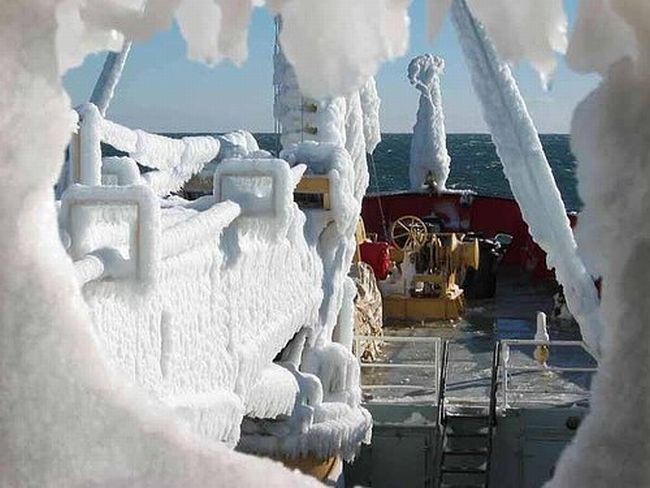|
|
Ship In A Storm
|
Many types of boats and ships are designed for inland and coastal waterways. These are the vessels that trade upon the lakes, rivers and canals.
Barges are a prime example of inland vessels. Flat-bottomed boats built to transport heavy goods, most barges are not self-propelled and need to be moved by tugboats towing or towboats pushing them. Barges towed along canals by draft animals on an adjacent towpath contended with the railway in the early industrial revolution but were out competed in the carriage of high value items because of the higher speed, falling costs, and route flexibility of rail transport.
Riverboats and inland ferries are specially designed to carry passengers, cargo, or both in the challenging river environment. Rivers present special hazards to vessels. They usually have varying water flows that alternately lead to high speed water flows or protruding rock hazards. Changing siltation patterns may cause the sudden appearance of shoal waters, and often floating or sunken logs and trees (called snags) can endanger the hulls and propulsion of riverboats. Riverboats are generally of shallow draft, being broad of beam and rather square in plan, with a low freeboard and high topsides. Riverboats can survive with this type of configuration as they do not have to withstand the high winds or large waves that are seen on large lakes, seas, or oceans.
Lake freighters, also called lakers, are cargo vessels that ply the Great Lakes. The most well-known is the SS Edmund Fitzgerald, the latest major vessel to be wrecked on the Lakes. These vessels are traditionally called boats, not ships. Visiting ocean-going vessels are called "salties." Because of their additional beam, very large salties are never seen inland of the Saint Lawrence Seaway. Because the smallest of the Soo Locks is larger than any Seaway lock, salties that can pass through the Seaway may travel anywhere in the Great Lakes. Because of their deeper draft, salties may accept partial loads on the Great Lakes, "topping off" when they have exited the Seaway. Similarly, the largest lakers are confined to the Upper Lakes (Superior, Michigan, Huron, Erie) because they are too large to use the Seaway locks, beginning at the Welland Canal that bypasses the Niagara River.
|
|









